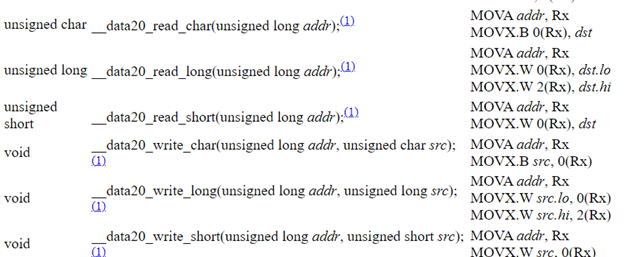Tool/software:
Hi,
I would like to ask whether, when I use those intrinsic functions and compile the program, the instructions may differ. I have noticed in my program that it does not matter whether there is a small data model or a restricted data model; the instructions are as follows: no MOVEX instruction as seen in the description picture, just one MOVEA and then two MOV.W for _data20_read_long, which is slightly different from the previous description where MOVEX is used. When ordinary pointers are used, the change is noticeable. In the restricted model, MOVEX.W is used, which I assume allows the use of a 20-bit address. When I switch to the small model, MOV.W instruction is used, which causes only a 16-bit address to be used, I assume. I would like to know whether it will change somehow when I use the _data20_read_long or write intrinsics in accessing the 20-bit address, even when the model changes to small, because when ordinary pointers are used, it does and also why there is no MOVEX instruction used.



